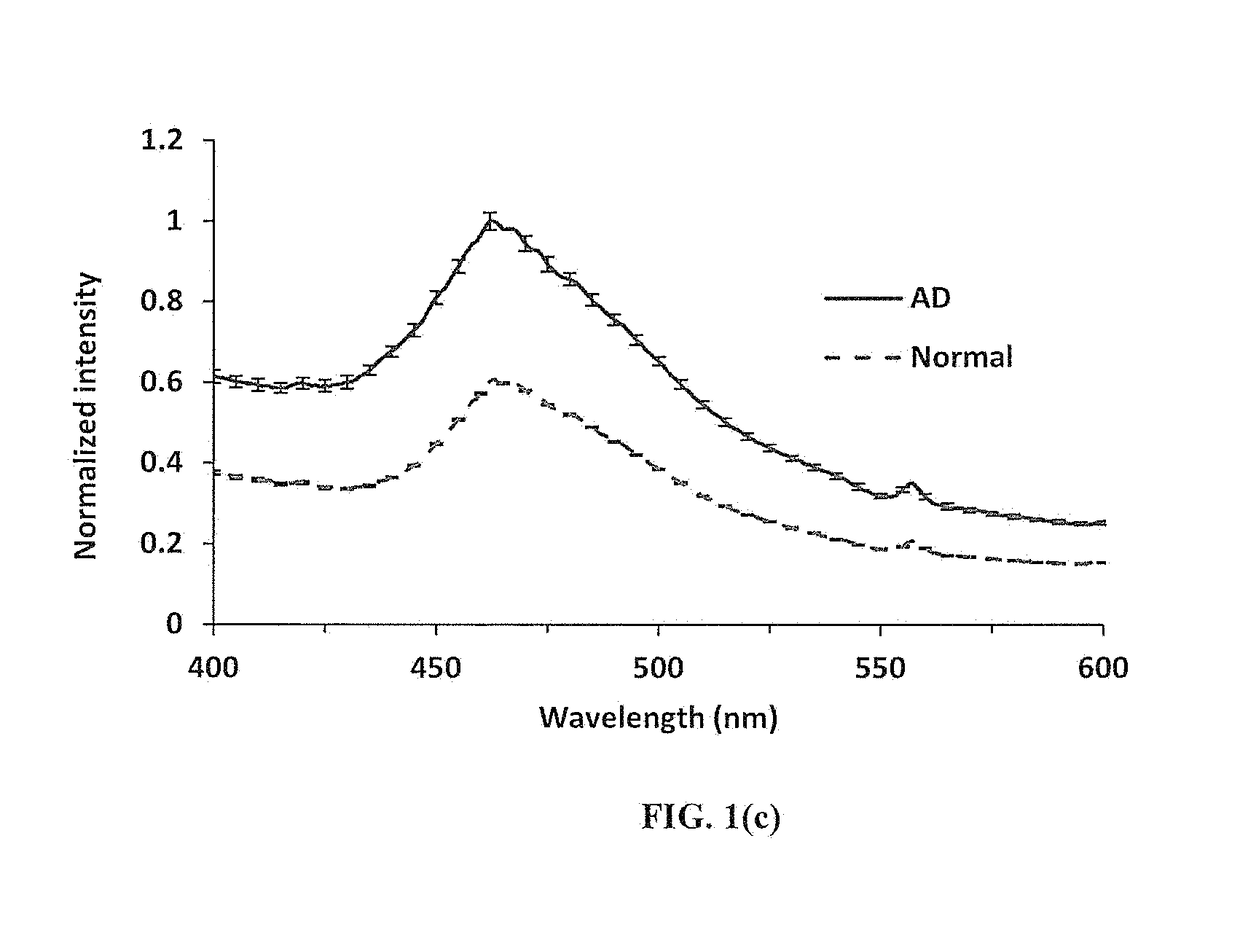Label-free single and multi-photon fluorescence spectroscopy to detect brain disorders and disease: alzheimer, parkinson and autism from brain tissue, cells, spinal fluid and body fluids
a fluorescence spectroscopy and single-photon technology, applied in the field of diagnostic testing of brain disorders and diseases, can solve the problems of still no cure or molecular understanding, and achieve the effects of less time consumption, no tissue removal, and minimal invasiveness
- Summary
- Abstract
- Description
- Claims
- Application Information
AI Technical Summary
Benefits of technology
Problems solved by technology
Method used
Image
Examples
Embodiment Construction
[0015]Fluorescence spectroscopy measures allowed electronic transitions of various chromophores in the complex tissue structure. There are several natural label free fluorophores that exist in tissue and cells which, when excited with ultraviolet light, emit fluorescence in the ultraviolet and visible regions of the spectrum. Some of the absorption and emission spectra of these native endogenous fluorophore molecules are shown in FIGS. 2(a)-(b). The Flavins and NADH show changes in the spectra between their oxidized and reduced state. Single photon excitation fluorescence is applied to reveal the state of tissue and cells. The flavin and NADH show changes in the spectra between their oxidized and reduced state. When tryptophan, NADH and flavin are excited with ultraviolet light, they emit single photon excitation fluorescence in the ultraviolet and visible regions of the spectrum. Photon excitation of the Key molecules in FIG. 2 can be detect in sample of spinal and body fluids or i...
PUM
| Property | Measurement | Unit |
|---|---|---|
| wavelengths | aaaaa | aaaaa |
| wavelengths | aaaaa | aaaaa |
| exposure wavelengths | aaaaa | aaaaa |
Abstract
Description
Claims
Application Information
 Login to View More
Login to View More - R&D
- Intellectual Property
- Life Sciences
- Materials
- Tech Scout
- Unparalleled Data Quality
- Higher Quality Content
- 60% Fewer Hallucinations
Browse by: Latest US Patents, China's latest patents, Technical Efficacy Thesaurus, Application Domain, Technology Topic, Popular Technical Reports.
© 2025 PatSnap. All rights reserved.Legal|Privacy policy|Modern Slavery Act Transparency Statement|Sitemap|About US| Contact US: help@patsnap.com



